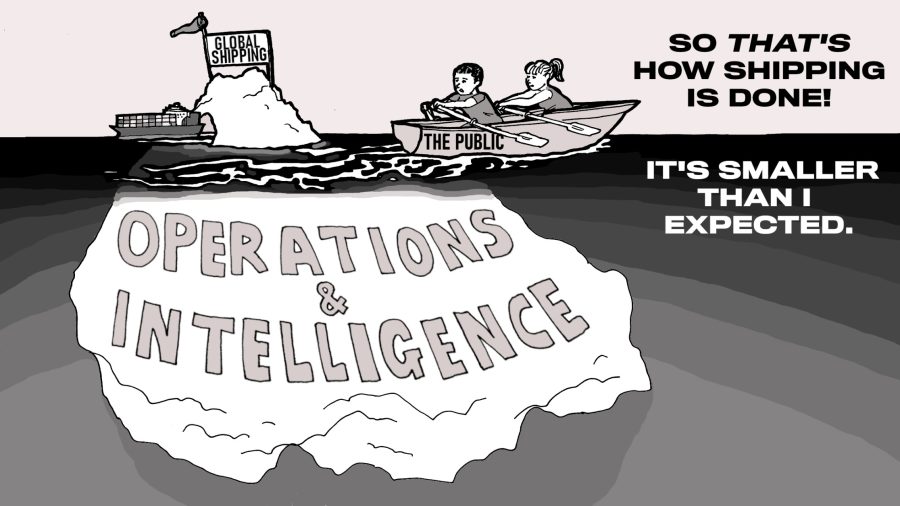Freight analytics 101 ?
Before defining freight analytics, it’s worth focusing on analytics. So how have analytics come about? Gil Press, senior technology contributor at Forbes, argues it emerges from the marriage of the very old field of statistics with the relatively new one of computer science. In turn, analytics are now understood to belong in four different fields, a classification we explored during our most recent event: The Rise of Freight Analytics (available on-demand if you click here). We are going to walk through each of them and use an example relevant to the freight industry:
Descriptive analytics
Descriptive analytics use data to describe (surprise) what’s happened and/or what is happening. An example of this in freight would be the aggregation of tonne-miles data on the VLCC Middle East to Asia route. This analysis could then be used to look at the impact of Covid-19 on volumes on this route for example. Shipowners can use this analysis to track their performance against competitors for example, to measure how well utilised their fleet is versus others.
Diagnostic analytics
This type of analytics is a bit more subtle. Beyond descriptive capabilities it seeks to answer the question “why did this happen?”. An example of its application can be seen through the business case of our data partners, Windward. By analysing vessel behaviours, Windward are able to assess why a vessel may have come under the threat of sanctions following suspect and/or potentially illicit activities. In turn this allows their clients to address sanctions risk and take the appropriate actions to protect themselves against it.
Predictive analytics
Predictive analytics is currently the name of the game. The introduction of technology such as machine learning, that allows us to predict possible outcomes, really starts to introduce a wide range of possibilities. Infinite really, only limited by one’s imagination. Seeing what the future holds seems a lot more possible with predictive analytics. Vortexa’s freight analytics such as vessel availability, that allow to assess how many vessels will be able to be in one place at a given time in the future, allows to infer critical information as to the future of freight rates and/or one’s own trading opportunities, for example. Our use of our proprietary machine learning technology allows the extraction of more value from our data, to better meet our users’ needs.
Prescriptive analytics
An enhanced version of predictive analytics, prescriptive analytics are the ultimate goal when it comes to harnessing the power of data. This is the moment you hear the slot machine go bonkers in the casino. Prescriptive analytics encompasses using analytics to not only show you what happened, what is happening and what could happen but also goes as far as recommending a certain course of action based on all the latter. Taking the example of a list of available vessels generated by an analytics dashboard, prescriptive analytics would let that same dashboard pick the best vessel for your needs based on a range of factors that could be tailored to each user, each company. This has the potential to turbocharge earnings whilst minimising costs by increasing the efficiency of the chartering process.

